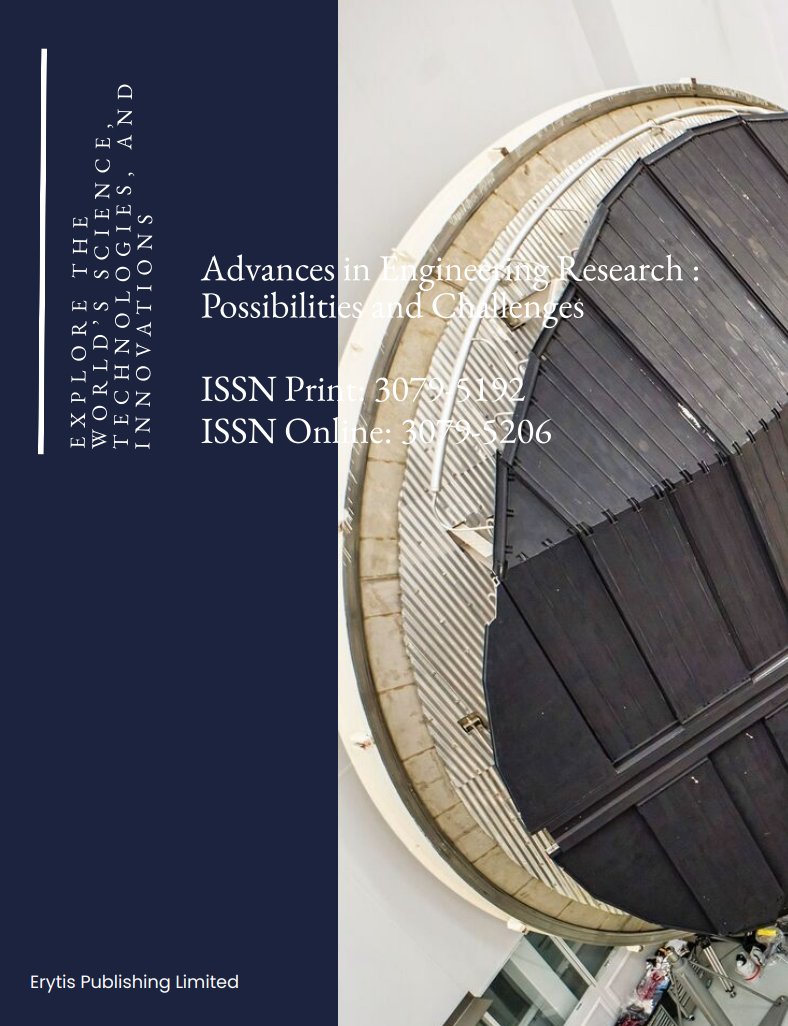Research Progress on Performance Regulation and Application of Ti-Ni-Based, Fe-Based, and Cu-Based Shape Memory Alloys
DOI:
https://doi.org/10.63313/AERpc.9024Keywords:
Shape memory alloys, Ti-Ni-based shape memory alloys, Fe-based shape memory alloys, Cu-based shape memory alloysAbstract
This paper reviews the system characteristics and application progress of shape memory alloys (SMAs). SMAs realize the shape memory effect (SME) and superelasticity (SE) through solid-solid phase transformations (such as B2↔B19'), and their performance is regulated by phase transformation temperatures (Ms/As), hysteresis width, and strain recovery rate. Among the three main alloy systems: Ti-Ni-based alloys dominate high-end medical and aerospace fields due to their highly reversible thermoelastic transformations and biocompatibility, though noble metal doping is needed to improve high-temperature performance; Fe-based alloys exhibit potential for low-cost engineering applications through non-thermoelastic transformations (such as γ→ε martensite); Cu-based alloys balance cost and performance via stacking fault energy regulation, with fatigue resistance optimization being the core challenge. Studies show that annealing processes (e.g., annealing Ti-Ni alloys at 673–773 K) and composition design (e.g., Fe-Mn-Al-Ni gradient alloys) can significantly enhance phase transformation stability. Future work should integrate multi-scale phase transformation mechanisms and advanced manufacturing techniques (such as 4D printing) to expand the engineering applications of SMAs in intelligent systems and extreme environments.
References
[1] Gao Qianqian. Study on Influencing Factors of Self-Healing Performance of SMA Concrete Beams [D]. Shenyang Jianzhu University, 2015.
[2] Cai Jifeng, He Zhirong, Liu Yan, et al. Research Progress on Ti-Ni Based Shape Memory Al-loys and Their Applications [J]. Metal Heat Treatment, 2009, 34(05): 64-69.
[3] He Zhirong, Wang Fang, Zhou Jingen. Effects of Ni Content and Heat Treatment on Phase Transformation and Deformation Behavior of Ti-Ni Shape Memory Alloys [J]. Metal Heat Treatment, 2006, (09): 17-21.
[4] He Zhirong. Effects of Heat Treatment Processes on Phase Transformation and Shape Memory Behavior of Ti-Ni Alloys [J]. Metal Heat Treatment, 1999, (01): 6-8.
[5] Lü Zhonghua. High-Temperature Deformation Properties of Ti-Ni Shape Memory Alloys [J]. Journal of Jiamusi University (Natural Science Edition), 2008, (02): 175-177.
[6] Zhou Jianjie, Ma Fengcang, Liu Ping, Liu Xinkuan. Effects of Heat Treatment on Surface Properties of Ni-Ti Alloys [J]. Nonferrous Metals Materials and Engineering, 2019, 40(6): 6-13.
[7] Cai Wei, Meng Xianglong, Zhao Xinqing, et al. Martensitic Phase Transformation and Shape Memory Effect of TiNi-Based High-Temperature Shape Memory Alloys [J]. Progress in Materials Science China, 2012, 31(12): 40-47.
[8] Meng Xianglong, Cai Wei. Research Progress on TiNi-Based Shape Memory Materials and Their Applications [J]. Progress in Materials Science China, 2011, 30(09): 13-20+56.
[9] Li Weishan, Chen Hongyu, Yuan Zhongzhi, et al. Electrochemical Study on Pitting Sensitiv-ity of Passive Films on Fe-Based Alloys [J]. Electrochemistry, 2004, (04): 397-403.
[10] Fang Yunchang, Wu Fengmin, Wu Wenhui, et al. AFM Study of Mesostructure of Fe-Based Nanocrystalline Thin Strips [J]. Chinese Science Bulletin, 2004, (18): 1835-1839.
[11] Qu Naiqin. Research and Development of German Shape Memory Alloys [J]. Shanghai Nonferrous Metals, 1997, (04): 174-177+182.
[12] Xie Hua, Liu Jian, Huo Yanqiu, et al. Preferential Orientation and Microstructure Evolution of Directionally Solidified Ferromagnetic Shape Memory Alloy Co-Ni-Ga [J]. Acta Metallur-gica Sinica, 2007, (04): 417-421.
[13] Huo Yanqiu, Long Xiuhui, Xie Hua, et al. Effect of the γ Phase on Martensitic Transfor-mation and Shape Memory Effect of Magnetic Shape Memory Alloy Co-Ni-Ga [J]. Rare Met-al Materials and Engineering, 2010, 39(07): 1279-1283.
[14] Zou Qin, Dang Shang, Li Yanguo, et al. Research Progress of Fe-Based Shape Memory Alloys [J]. Materials Review, 2019, 33(23): 3955-3962.
[15] Guo Mingxing, Wang Mingpu, Li Zhou, et al. Research on High-Temperature Copper-Based Shape Memory Alloys [J]. Functional Materials, 2004, (03): 5-8.
[16] Zuo Shungui, Jin Xuejun, Jin Mingjiang. Research Progress of High-Temperature Shape Memory Alloys [J]. Mechanical Engineering Materials, 2014, 38(01): 1-5+46.
[17] Li Lihui, Wan Farong, Long Yi. Influence of Heat Treatment Methods on Shape Memory Ef-fect of Cu-Al-Mn Alloys [J]. Nonferrous Metals, 2003, (04): 13-16.
[18] Wu Genhua. Shape Memory Alloys and Their Applications [J]. Journal of Anqing Normal University (Natural Science Edition), 2004, (04): 20-23.
[19] Cao Zhongqiu, Yu Long, Li Fengchun. Research Status on High-Temperature Chemical Sta-bility of Cu-Based Alloys [J]. Journal of Shenyang Normal University (Natural Science Edi-tion), 2010, 28(03): 321-326.
[20] Wang Ermin, Zhao Weibiao, Zhao Zhenye, et al. Microstructure Evolution of Ni-Ti Shape Memory Alloys under High-Temperature Hot Deformation Conditions [J]. Materials Sci-ence and Technology, 1999, (S1): 251-254.
Downloads
Published
Issue
Section
License
Copyright (c) 2025 by author(s) and Erytis Publishing Limited.

This work is licensed under a Creative Commons Attribution 4.0 International License.















